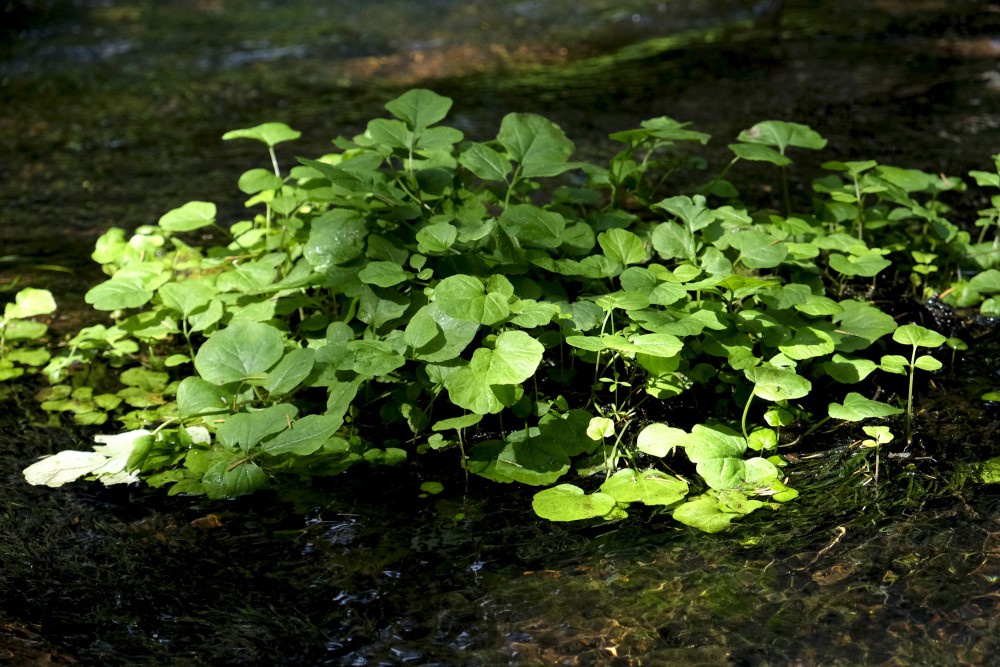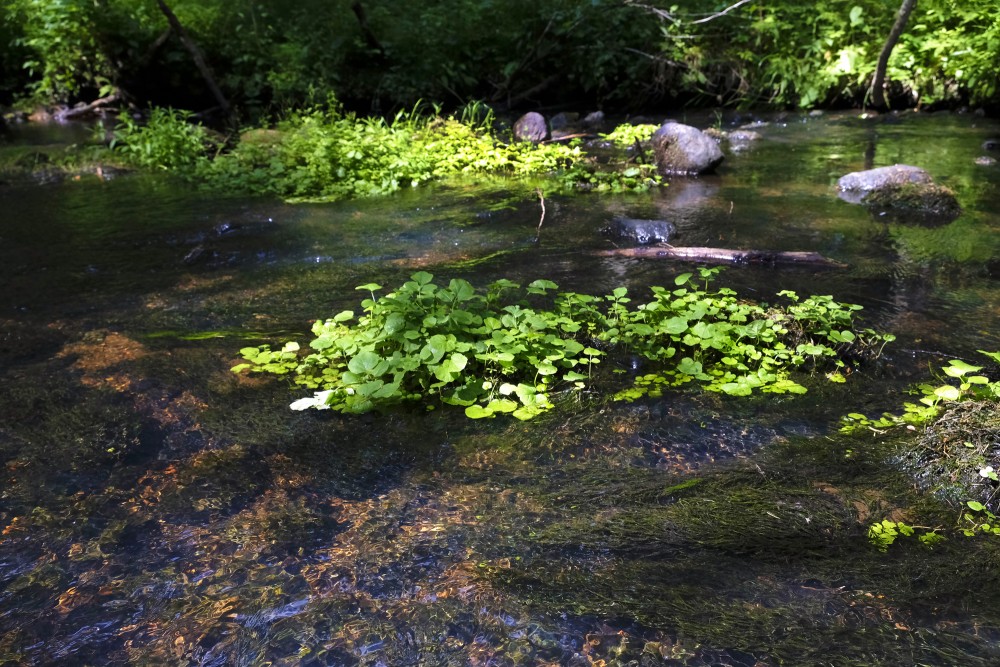Aquatic plants
Aquatic plants are plants that have adapted to living in aquatic environments (saltwater or freshwater). They are also referred to as hydrophytes or macrophytes to distinguish them from algae and other microphytes. A macrophyte is a plant that grows in or near water and is either emergent, submergent, or floating. In lakes and rivers macrophytes provide cover for fish, substrate for aquatic invertebrates, produce oxygen, and act as food for some fish and wildlife.
Macrophytes are primary producers and are the basis of the food web for many organisms. They have a significant effect on soil chemistry and light levels as they slow down the flow of water and capture pollutants and trap sediments. Excess sediment will settle into the benthos aided by the reduction of flow rates caused by the presence of plant stems, leaves and roots. Some plants have the capability of absorbing pollutants into their tissue. Seaweeds are multicellular marine algae and, although their ecological impact is similar to other larger water plants, they are not typically referred to as macrophytes.
Aquatic plants require special adaptations for living submerged in water, or at the water's surface. The most common adaptation is the presence of lightweight internal packing cells, aerenchyma, but floating leaves and finely dissected leaves are also common. Aquatic plants can only grow in water or in soil that is frequently saturated with water. They are therefore a common component of wetlands. One of the largest aquatic plants in the world is the Amazon water lily; one of the smallest is the minute duckweed. Many small aquatic animals use plants such as duckweed for a home, or for protection from predators. Some other familiar examples of aquatic plants include floating heart, water lily, lotus, and water hyacinth.
Historically, aquatic plants have been less studied than terrestrial plants.
Distribution
The principal factor controlling the distribution of aquatic plants is the availability of water. However, other factors may also control their distribution including nutrient availability, disturbance from waves, grazing, and salinity. Some aquatic plants are able to thrive in brackish, saline, and salt water.
Evolution
Aquatic plants have adapted to live in either freshwater or saltwater. Aquatic vascular plants have originated on multiple occasions in different plant families; they can be ferns or angiosperms (including both monocots and dicots). The only angiosperms capable of growing completely submerged in seawater are the seagrasses. Examples are found in genera such as Thalassia and Zostera. An aquatic origin of angiosperms is supported by the evidence that several of the earliest known fossil angiosperms were aquatic. Aquatic plants are phylogenetically well dispersed across the angiosperms, with at least 50 independent origins, although they comprise less than 2% of the angiosperm species. Archaefructus represents one of the oldest, most complete angiosperm fossils which is around 125 million years old. These plants require special adaptations for living submerged in water or floating at the surface.
en.wikipedia.org

